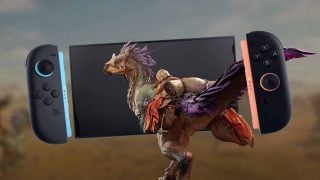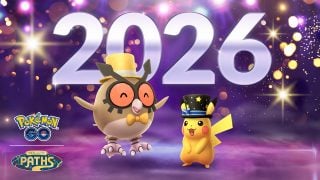Back in the early ‘90s, Masahiro Sakurai, who at the time was working at HAL Laboratory, was tasked with creating a new Game Boy game in which players of all ages and skill levels could enjoy and complete. During production and testing, a portly, bulbous blob named Popopo was hastily dreamt up by Sakurai as a temporary placeholder for developers to work with while a much more refined character design could be hashed out. Over time, this little pink ball of fluff grew to be so overwhelmingly endearing amongst the development team that his simple, ball-like appearance was largely left unaltered to fit in aesthetically with the pleasant, playful and lighthearted tone of the game.
The game under development, of course, was Kirby’s Dream Land, marking the humble beginnings of the now legendary Nintendo mascot who’s since consumed the hearts and minds of anyone foolish enough to test his insatiable appetite. While perhaps not the most lengthy or robust game in the series, it deserves immense recognition for veering away from typical platforming conventions and establishing a solid foundation for the future of the franchise.
A star is born
In typical Nintendo fashion, the game’s story oozes with charm and personality. King Dedede, the self-proclaimed king of Dream Land, has stolen all the world’s food. During the course of Kirby’s adventure, you’ll float your way through four stages collecting sparkling stars from the selfish king’s most fearless minions in an effort to put a stop to his gluttonous greed once and for all.
It’s a relatively short and laid-back adventure that should only take most players an hour to complete with minimal effort. In this way, Sakurai succeeded in his goal to make a game much more accessible to a wider audience of gamers, a fundamental concept that permeates each and every installment of the Kirby franchise. Though despite being primarily designed as a platformer for budding gamers, the series has always been able to strike a healthy balance of ease and difficulty, occasionally providing additional ways to play for more seasoned gamers to tackle. In Kirby’s Dream Land, for example, an unlockable hard mode and the ability to adjust Kirby’s maximum HP and starting number of lives offers an entirely new experience for those up to the challenge.
Most importantly, Kirby’s Dream Land is best appreciated for establishing many of the core gameplay mechanics that have since become synonymous with the series. The ability to inhale, swallow and regurgitate enemies back as projectiles and float indefinitely all make their series debut. Infamous items like the maxim tomato, invincibility candy, and superspicy curry are introduced, as well as a majority of the iconic baddies the series is best known for: from common enemies like the adorable Waddle Dee and Scarfy, to brooding boss characters like Whispy Woods and Kracko.
Like most Kirby games, the music is utterly phenomenal. The cheery, upbeat melodies of Green Greens and Castle Lololo mesh perfectly with the whimsical tone and setting established by the cutesy artistic direction. A personal highlight of mine is King Dedede’s theme: a fast, frantic and epic track that greatly heightens the tension and excitement for Kirby’s final confrontation with the (less popular) king of swing. Fun fact: The game’s soundtrack was solely composed by Jun Ishikawa, who’s had a staple presence throughout the series’ rich and varied history.
It’s also the only game in the series where his patented pink hue was ever in question. While Sakurai insists that Kirby was always meant to be pink, promotional material for Kirby’s Dream Land painted Kirby as white to match his in-game appearance on the original Game Boy’s monochromatic display.
Closing remarks
With more than 20 games under his plus-sized belt and a new adventure on the horizon, the Kirby series is undeniably one of the most successful, charming and beloved franchises in all of gaming. By designing with the intention of appealing to a broader audience, the series has since been able to continuously evolve and establish its own identity outside of Mario’s massive shadow. Without question, Kirby’s Dream Land played a significant role in defining the series as we know and love it today, and for that I will always consider it an instant classic.
What did you think of Kirby’s gaming debut? Kirby’s Dream Land is currently available in the Nintendo eShop on the Nintendo 3DS, so whether it’s your first time or simply for nostalgia’s sake, I highly suggest revisiting this charmingly unique adventure.
Nintendo Inquirer’s gearing up for the release of Planet Robobot by hosting a string of celebratory Kirby articles commemorating previous titles in the series. Have a look at our Kirby appreciation article to get a glimpse of all that is wonderful and unique about our favorite pink puffball!
Leave a Comment




